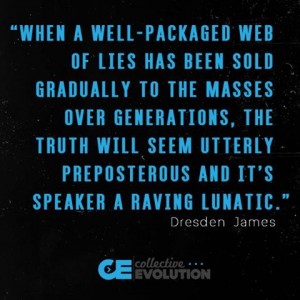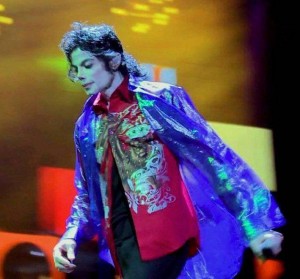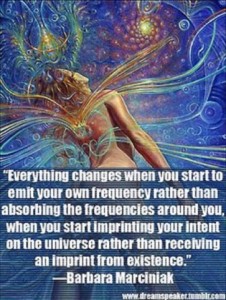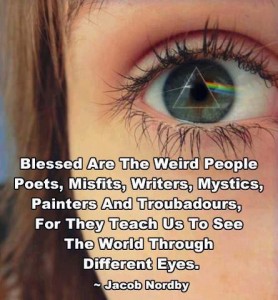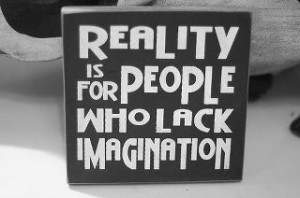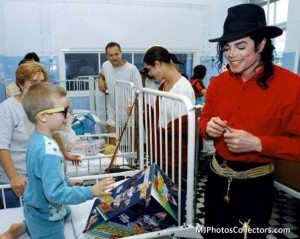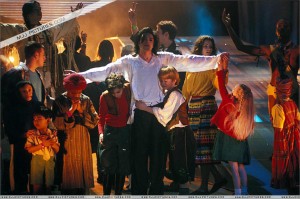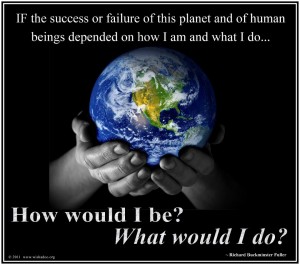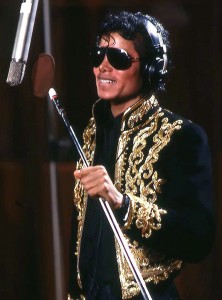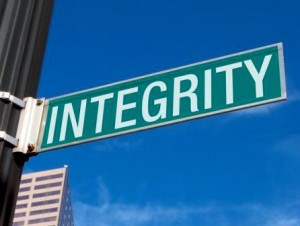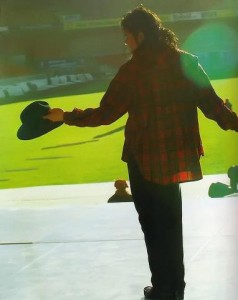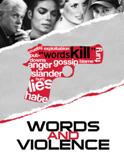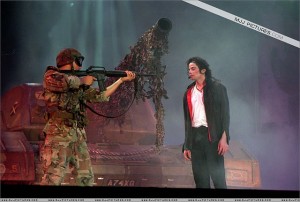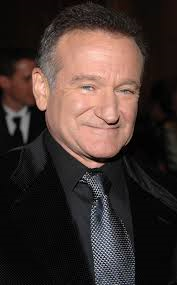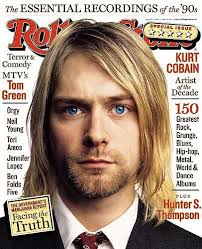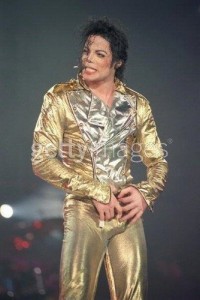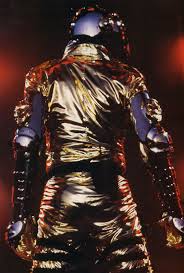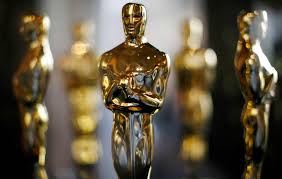 The Oscars was the last straw. The “white” Oscars.
The Oscars was the last straw. The “white” Oscars.
The Academy Awards don’t just determine who is the “best” in a category, the winners see more new moviegoers and as a result, inform mass consciousness– of a nation and the world. “The Oscars” show an appreciation for art that conveys pathos like no other medium; pop culture tends to reflect what’s “trending” and the Oscars dictate trends. The snub to “Selma” is more than I can bear.
I’ll admit it. I’ve been avoiding this. I’ve avoided coming to this space to discuss recent events regarding Ferguson, Michael Brown, Eric Garner, 12 year old Tamir Rice, John Crawford of Ohio, the N.Y.P.D. disrespecting Mayor de Blasio,the Indian man, now partially paralyzed because of an over zealous officer in Alabama, all the dead black men…
In other words… Racism.
I’ve written my fair share about this 21st century scourge. Much of it witnessed through the lens of and surrounding, a particular black artist bludgeoned relentlessly after a stellar success that propelled him into superstardom and hence throughout his career– by his own and the whites who came to accept him and particularly by those who didn’t and the media. Much of what happened to Michael Jackson was because of racism. Michael Jackson was an enigma. A proud black man born in the mean streets of a black forgotten neighborhood in a house the size of a garage who became the most famous man on earth, who held a unique and powerful position in history and who deliberately and repeatedly addressed black/white relations and marginalization vs. unity in his art.
I have wondered, more than once, what Michael Jackson would think and say today about what is goin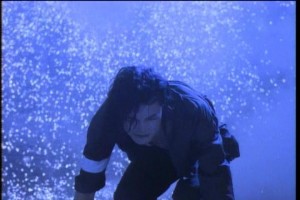 g on with race relations particularly between citizens and police. What might he say about Ferguson? “Ferguson” doesn’t mean just the city of Ferguson, but has come to mean a mindset about African Americans in society in general and the killing of black men by law enforcement. It’s a mindset that makes assumptions about the intrinsic “goodness” of people based on their skin pigmentation. Whites have privilege that assumes basic goodness or at least adopts the idea of ‘innocent until proven guilty’ while blacks, and especially black males, are assumed guilty of something (even if it’s just “intention”) that does not represent “goodness.” A black male is much more suspicious in the neighborhood than a white one. He is assumed to be “lurking” instead of just walking or “up to no good” instead of just benignly present. Likely a “thug.” And “thug” has come to mean code for an African American male who appears menacing and makes whites feel uncomfortable.
g on with race relations particularly between citizens and police. What might he say about Ferguson? “Ferguson” doesn’t mean just the city of Ferguson, but has come to mean a mindset about African Americans in society in general and the killing of black men by law enforcement. It’s a mindset that makes assumptions about the intrinsic “goodness” of people based on their skin pigmentation. Whites have privilege that assumes basic goodness or at least adopts the idea of ‘innocent until proven guilty’ while blacks, and especially black males, are assumed guilty of something (even if it’s just “intention”) that does not represent “goodness.” A black male is much more suspicious in the neighborhood than a white one. He is assumed to be “lurking” instead of just walking or “up to no good” instead of just benignly present. Likely a “thug.” And “thug” has come to mean code for an African American male who appears menacing and makes whites feel uncomfortable.
That’s a lot to extrapolate because of skin color! The history of that attitude goes back a long, long way. There is a real but completely irrational fear of dark skinned men. It comes from the assumption that blacks are not that far descended from apes and are unable to contain their “animalistic” and brute desires and behaviors. When the slaves in the American South began to show evidence of Vitiligo, it set off a panic. It led to digging up graves, the dissecting of bodies and even experimentation on live men to find the cause.
Michael Jackson, it seems, would be more sensitive to race and skin color than most having been an African American with his own skin issues in the form of autoimmune inflammatory diseases like Vitiligo and Lupus. “Ferguson” and what it has come to mean in the context of culture, would make him cry. And not little silent tears, but large, loud crocodilian tears. No stranger to his softer and feminine side having integrated it solidly unlike many of his contemporaries, he would cry– unashamed and unabashedly. Jackson was particularly sensitive to the difficult navigation of boyhood with all its double messages, nuances, taboos and generalizations. He was sensitive to the ceilings youth have to contend with on their way to adulthood imposed arbitrarily because of being black. He was sensitive to street kids and even gang members, having tried to humanize them to each other by incorporating rival members into his video.
As an artist who worked so hard and funded so much of his own work, and after being pummeled by the media, I think he’d be openly mortified about today’s headlines regarding black men. While there’s a great deal of history to be depressed and disillusioned about, and add to that the reality that so little has changed or advanced, I doubt Jackson would be numb or indifferent. So much of his own villainization was because of the color of his skin, and the changing color of his skin. Of all the people who might have gotten Vitiligo for symbolic reasons, Jackson was fated to have the disease and be viewed as deliberately changing his skin color– for status. That skin color should be connected to status is a dark and archaic tenet; unfortunately, it has not been left behind to fade into history.
Jackson had his own encounters with law enforcement in his neighborhood, part of the jurisdiction of Santa Barbara and the county run by “Mad-dog” Thomas Sneddon. In the light of new prejudiced encounters between police officers and black men, one is left to wonder if the same attitude was rampant during Sneddon’s reign as District Attorney. Santa Barbara is considered an affluent white community. Police arrest records seem to bear out an intrinsic bias as most of the arrests list the names of many men who are clearly minorities. Michael, a student of black history and a native of Gary, Indiana would have been aware of such discrimination. His elevation to wealthy superstar would have insulated him from much, but to an officer of the law operating under a “Ferguson” mindset, his blackness would not be forgiven.
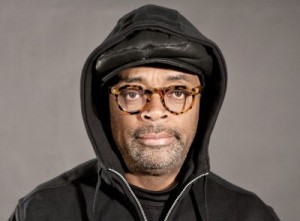 It was an issue in the hood then and it’s an issue in the hood now. Only the size of the hood has changed. The world, having shrunk because of the reach of modern communication, is now the hood. The world is our hood today. Economies and tragedies link us in an interdependent web. Media– mainstream, 24 hour coverage and social media, have made the ordinarily invisible, visible. Knowledge is instantaneous in a world that values connection more than at any time in history.
It was an issue in the hood then and it’s an issue in the hood now. Only the size of the hood has changed. The world, having shrunk because of the reach of modern communication, is now the hood. The world is our hood today. Economies and tragedies link us in an interdependent web. Media– mainstream, 24 hour coverage and social media, have made the ordinarily invisible, visible. Knowledge is instantaneous in a world that values connection more than at any time in history.
That connectedness has revealed to us, an issue that until now, was well known inside the hood but not generally known by society– the challenges of being African American and particularly an African American male facing an encounter with law enforcement in the hood. As a person with white privilege, I never had to be aware of “the talk.” My brother never got “the talk” because he is white and it’s therefore, irrelevant. “The talk” is what every African American family must discuss with its male youth– just because they’re black and particularly because they’re male. My brother never had to be indoctrinated about how to behave when (not if) stopped by a white majority police officer. He never had to be trained about how to stay alive when encountering the police. Our white privilege insulated us not against just the reality of the life of black males on the street, but insulated us against the knowledge of it.
Not until my foray into black music because of an accidental defacto role as a Michael Jackson biographer and as the founder of “Words and Violence,” a program that examines bullying in all its incarnations, did I know the real implications of growing up black and black male as that relates to law enforcement. In studying “the arts” and “performance arts” as messenger, antidote for bullying and instrument for social change, I stumbled into the Hip Hop culture with its vast, and global, underground. It was there and under the mentoring of a popular Hip Hop artist and activist, that I learned of “the talk” and the contemporary realities of “the hood.” And I was a civil rights activist in the sixties and seventies!
I, like my peers, went on with life and just assumed that the civil rights work that ignited awareness and demanded change in that decade, lived on as legacy and necessarily evolved, as all things do. Not true. There has been very little evolution. Spike Lee’s brilliant and powerful editorial film “Do the Right Thing” resonates and is just as relevant today as it was in 1989. I have Spike Lee to thank for my education about urban life and Black History, not my high school (or even college!) textbooks.
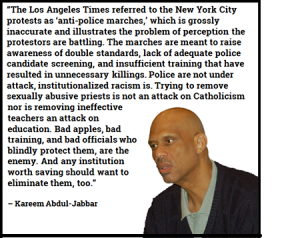 My apologies to the black community for not paying close attention; I thought the marches, the protests, the stand against discrimination all those years ago solved it. I naively believed the issue was evolving and we were close to being post-racial; hadn’t we elected a black president? But it was the election of that black president and the Republican and societal response to it and the reports by the Southern Poverty Law Center that alerted me to a serious gap in my knowledge. I had assumed we were more progressive than we were.
My apologies to the black community for not paying close attention; I thought the marches, the protests, the stand against discrimination all those years ago solved it. I naively believed the issue was evolving and we were close to being post-racial; hadn’t we elected a black president? But it was the election of that black president and the Republican and societal response to it and the reports by the Southern Poverty Law Center that alerted me to a serious gap in my knowledge. I had assumed we were more progressive than we were.
I suddenly had to deal with not only being shocked, but weary. All that work… all the social justice work… in all those trenches… for all those years… was it for nothing? I had been so engrossed in dealing with the tenure of George Bush, the resurgence of war over vague and inflated issues, the dumbing down of the presidency and failed American policy, that I missed what was going on. I was so disgusted over the empathy and lack of will (and protests) by Americans, that I emotionally cashed my chips and left the place under cover of darkness.
While I was glad to see “Occupy” come along, I knew it wasn’t enough. But I saw it more as political than racial. Until I had a black president and a new teacher– Mr. Jackson. And until I had Jackson African American fans who became friends and colleagues. Pardon my drowsiness. I’m awake now. Racism is still very much alive. It’s not because of indifference or even my white privilege (or maybe it is somewhat) that I went to sleep. It was the weariness. It was the disbelief I staggered from that kept me groggy because I didn’t want to face it– the reality that minority oppression and discrimination is alive and well after all that work and all this time.
I didn’t want to pick up and wield the warrior sword again. The fight for rights that should have been givens was long and arduous. I didn’t know if I had it in me to carry that sword; it was heavy the first time. And I’m not so young as I used to be. I’m not so idealistic. I’m not so sure I still believe in the human race; I’m not so sure there is enough to believe in.
But here it is in my face.
More and more videos appear of encounters with cops and ordinary citizens where the treatment of a citizen and the use of force by cops is a serious cause for dismay. The most recent ones I watched showed a traffic stop and a passenger was removed from the car and searched without probable cause. The driver sustained injuries in a takedown; in another situation, a man from India who was visiting his relocated (American) family to help with a newborn and was accosted while taking a walk down the street. He is suing the police department and is now partially paralyzed at their hands. In another video I watched a young cocky police officer make an assumption about a black man because of the number of keys on his key-ring. It was obvious the officer assumed the number of keys was equivalent to criminal intent. The gentleman had left his car running and parked outside a store after fetching his ID for the cashier in order to make a purchase. He was understandable upset at being manhandled as the officer with too much swag told him to “calm down.” Of course as officers escalate instead of diffuse a situation, the “suspect” is going to get more agitated– cops are killing unarmed people!
For selling cigarettes on the street.
For playing with a toy gun in a park.
For picking up a gun off the shelf in a store that sells guns in a state governed by an open carry law.
For walking while black.
M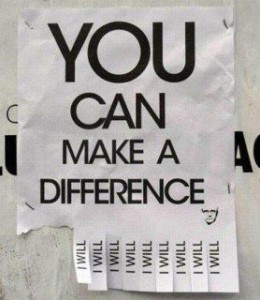 y avoidance is not because I’m not deeply affected; I am. I’m not distant or indifferent. That’s the farthest thing from what I feel and think about this current (and historic) cultural dilemma. The fact is, I feel too much. It’s too much. And it’s…. again.
y avoidance is not because I’m not deeply affected; I am. I’m not distant or indifferent. That’s the farthest thing from what I feel and think about this current (and historic) cultural dilemma. The fact is, I feel too much. It’s too much. And it’s…. again.
Tamir Rice was 12- a baby. A kid playing with a toy gun! As a child, I played with guns. I had BB guns, cap guns and we played cowboys and Indians before I understood how racist that was. We simply emulated what was on TV! We emulated the stereotypes. Until we got wise– decades later. How ingrained those cultural stereotypes can be!
My white privilege allows me to easily push race to the side for my white privilege is dominant. I don’t look part Native American as my ancestry reveals, so by default, I’m white. My daily life permits me to go about my business without a consciousness of my color or a nagging intuition that something is very wrong here. I don’t have to think how my skin color may affect the trajectory of my day; I just get dressed and go out. I don’t have to consider whether I will have to avert my eyes or shuffle invisibly through my day to avoid any unpleasant encounter with strangers holding assumptions and judgments about me without knowing me. And I certainly don’t have to think about my mortality or life and death– daily.
For black history month, I attended a Martin Luther King program and a program by a motivational speaker. But I still am an outsider because of my color. The smallish midwest place I live is relatively free of the violence or threats one might encounter in a bigger city. It’s a pretty safe place except for the perpetual “alarm” cocked and hair-trigger ready for women, particularly when alone, and especially after dark. It is part of our hardwiring to be on high alert that there may be a male stranger (or not) lurking just out of sight. Mostly, though I don’t need to be on alert. I could easily walk to the campus building where the events take place– mostly at night. Women must, like an invisible knapsack, carry the outrageous burden of potential rape and have to unreasonably take on their own rape prevention by being conscious of location and safety at all times. It’s a crock, really. And my whiteness doesn’t prevent assault, but statistically it diminishes the threat.
Mixed race women are far more vulnerable and black women in Africa and Afghanistan face the most danger. One in 6 women have been the victims or victims of attempted rape. One in 3 women will be assaulted in their lifetimes and almost 18 million American women have been the victims of rape. Child brides of forced marriages are beaten regularly, disfigured, burned and have their noses amputated should they misbehave.
Rape is a life sentence for a woman, but it’s not a sure death sentence. For black men the statistics about the kind of violence they face daily, are sobering. An African American male is about 66 times more likely to be stopped by police and about 21 times more likely to get shot by an officer than a while male.
Yes, Ferguson made me mad. New York made me madder. But Cleveland sent me into orbit. The gentleman who was in the Wal-Mart store in Ohio and who picked up a gun off the very shelves of the store and was shot point blank instantly by police was in a store that sold guns in a state that is by law, “open carry.” That means that you could take your AK-47 assault rifle into that Wal-Mart and not only avoid being stopped or questioned, but there is no justification for law enforcement even approaching you. A gun is not even probable cause. The open carry law makes that encounter in Wal-Mart a murder. Given the recent huge FAIL of the justice system, is it likely that anyone will be indicted?
I wore a hoodie to the Martin Luther King celebration and reception. Everybody noticed. They wondered. Nobody asked. It was time to step up and make a statement– some statement. Any statement. I wore the hoodie for Trayvon, Michael, Tamir, Eric and all those other men and families destroyed by corrupt attitudes, morals, ethics and actions. It was only a gesture. It’s not enough. But I did it for Martin Luther King and to feel solidarity; it was a reminder that black lives matter. It’s only a beginning. I have been writing about racism, black men and black music. But I have not lifted the sword again. Do I have the strength, I wonder?
I took issue and resisted the whole “black lives matter” meme because not only do I feel “all lives matter” (I always have) but I feel ALL LIFE MATTERS- the life of the very planet itself and its inhabitants. And to hear it said that it’s not about me and about being white is.. just… disingenuous. It is my race that is the problem. It’s my educational system and education that was, and is, inadequate. But I understand the insistence and I see the rants and protests as part of a process. The process is grief. I understand the “Black Lives Matter” insistence because historically they haven’t mattered much. How do you arrive at a calculation of 3/5 person? What formula could you possibly use? White privilege prevents many from understanding the reasoning behind “Black Lives Matter.” When some lives don’t matter and life itself matters so little, we are on our way away from, not toward, civilization. We are all affected by the values that surround us. We cannot witness this kind of thing and willful, systematic and systemic violence without being affected and particularly without contracting PTSD. We all have it– those who were there, those of us who witnessed and our families whom we interacted with during our brokenness. We are the walking wounded.
I know what prevented me from commenting on the current climate. I was part of the civil rights movement in the sixties and I was an activist even then. I was a Motown fan and frequented the North side of Milwaukee, sometimes the only white girl in the place. I was a dancer and the best dancers and clubs were on that side of town. I had no fear. I went to all the shows at “the scene” in Milwaukee and most of them were Motown. I saw all the greats– Four Tops, Temptations, Aretha, Count Basey, James Brown, Sam and Dave, and more… and of course I was a Jacksons fan.
The sixties saw the death of John Kennedy, Martin Luther King, Malcolm X, Robert F. Kennedy, the war in Viet Nam and the civil rights movement.
I’ve been wounded by it. And I’m weary. I’ve got this sword here and I don’t want to lift it alone. “I can’t do it by myself.”
______________________
Some things to think about…
http://www.nbcnews.com/news/nbcblk/arrested-sit-friendship-9-convictions-be-overturned-n294146
http://www.baltimoresun.com/news/opinion/oped/bs-ed-messenger-king-
Read the rest of this entry...


